心理学生怎么写今年的高考作文题?(2021版)
2021-06-112793
全国新高考Ⅰ卷
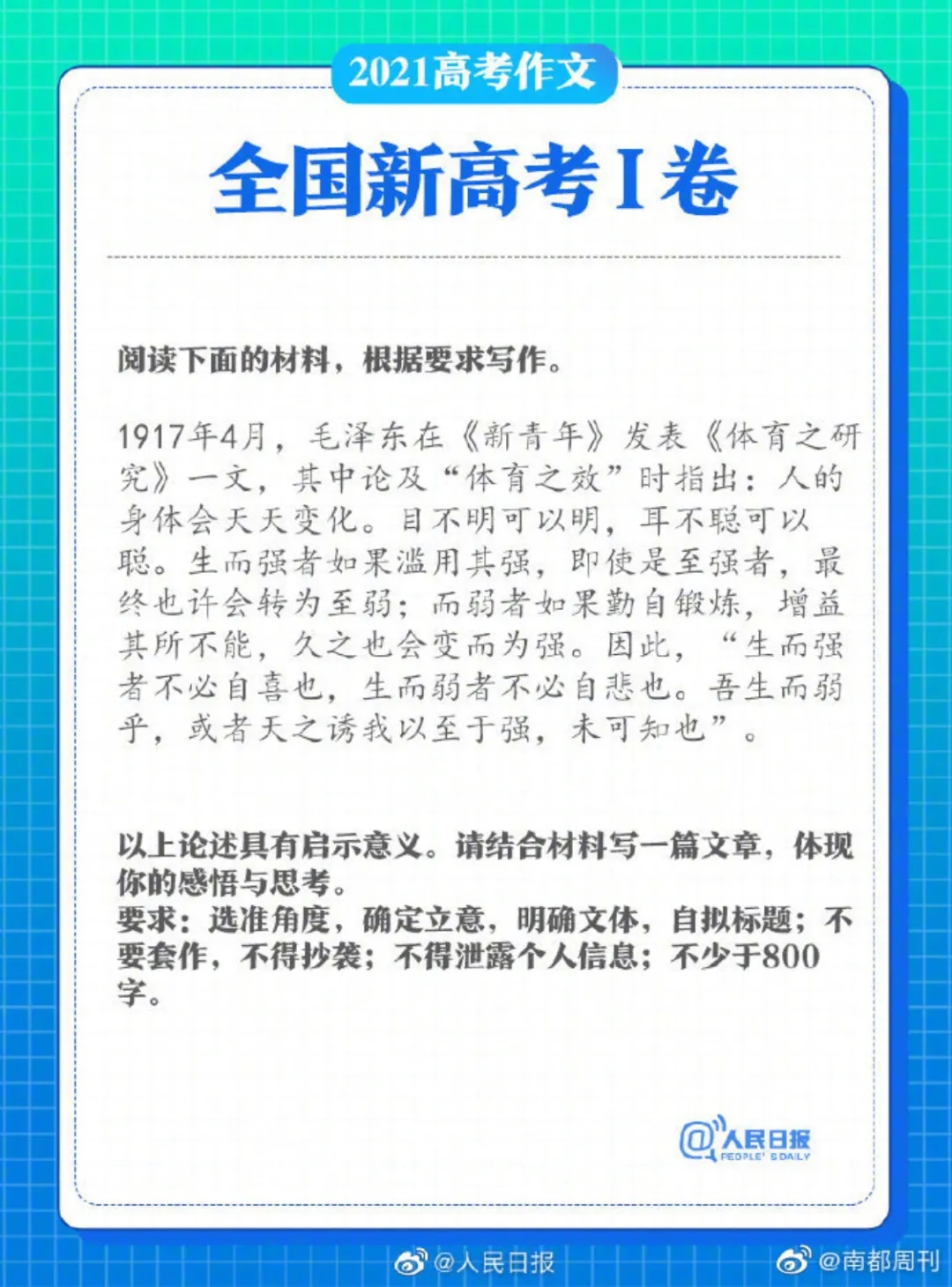
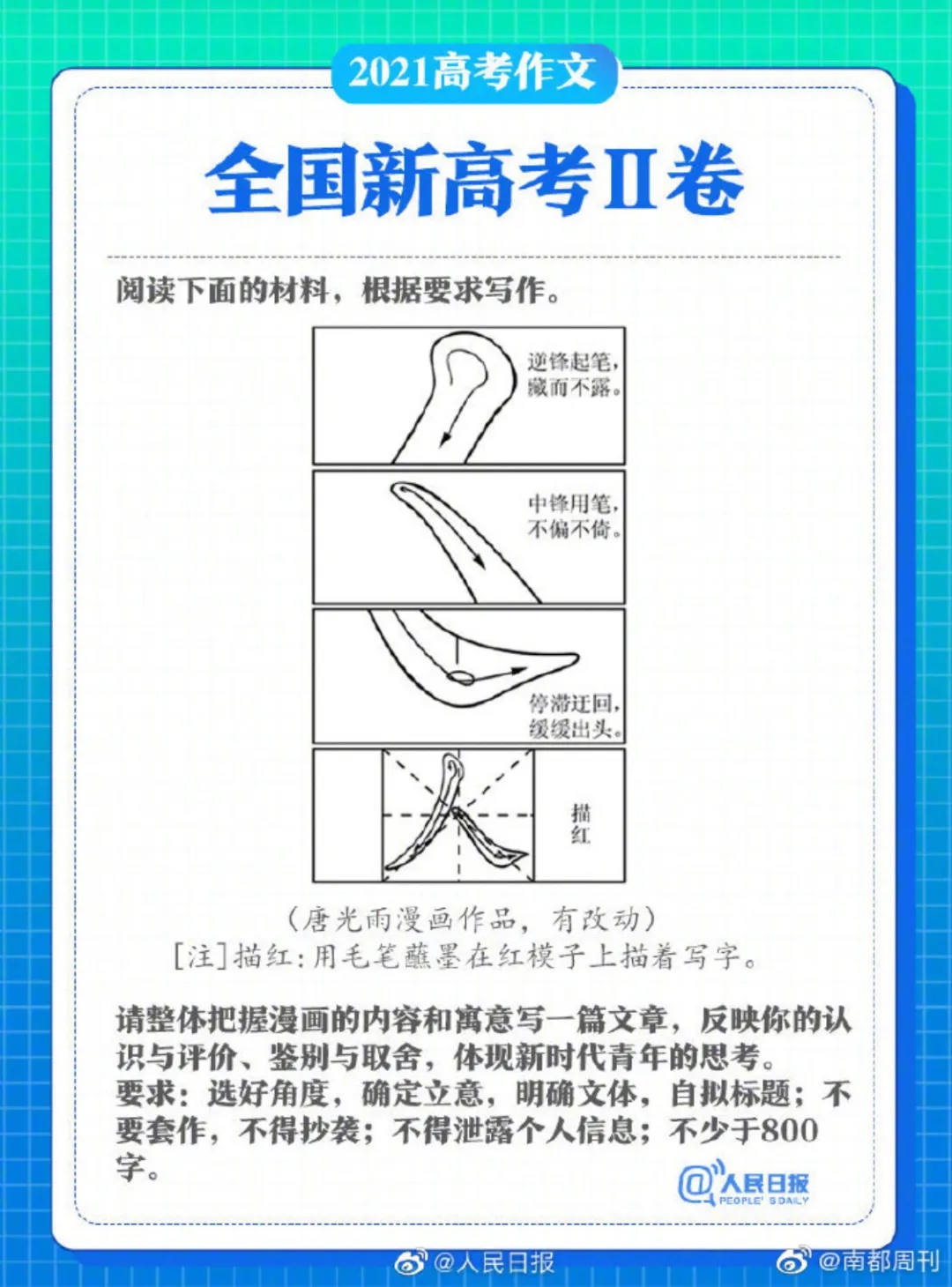
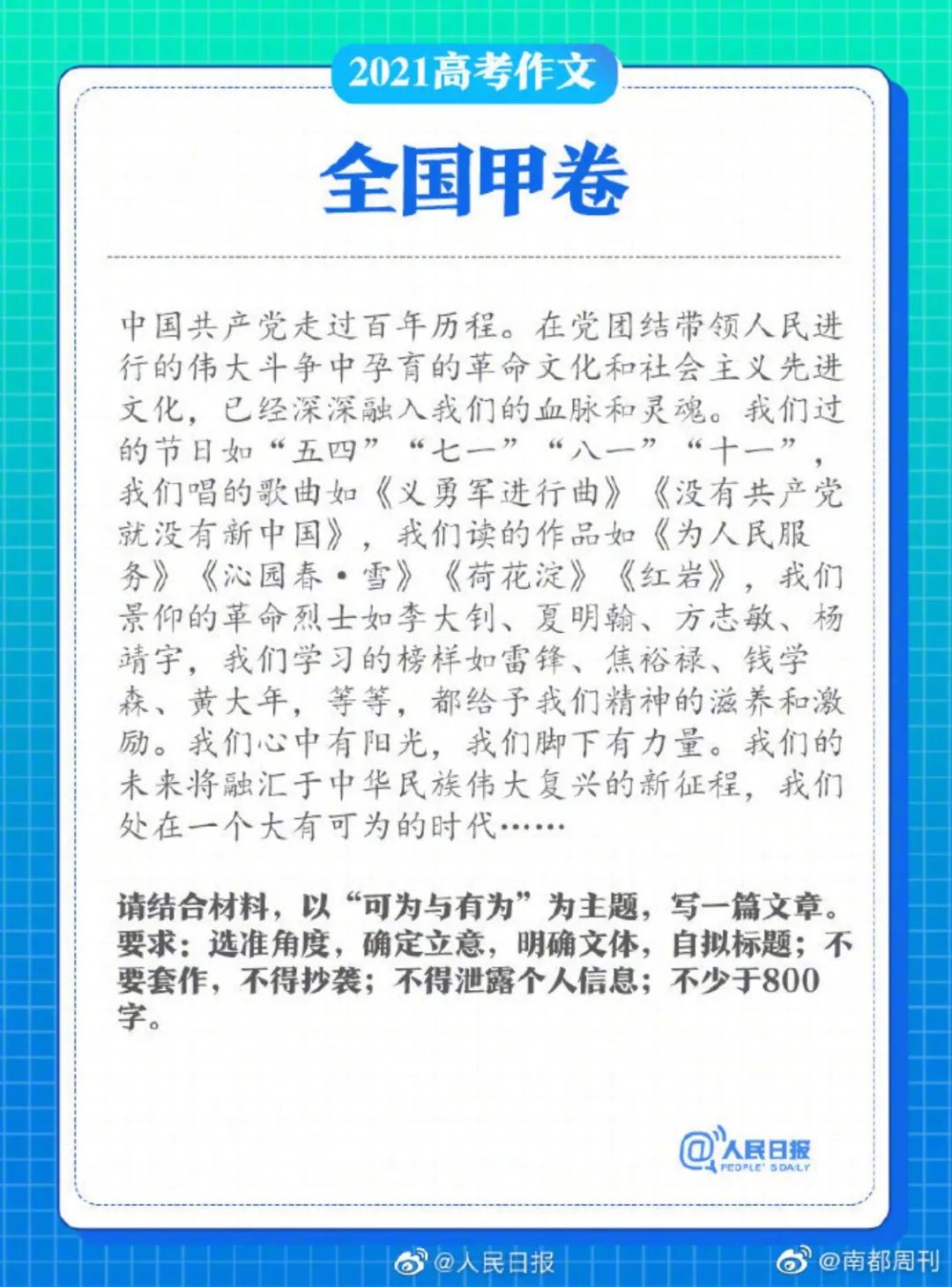
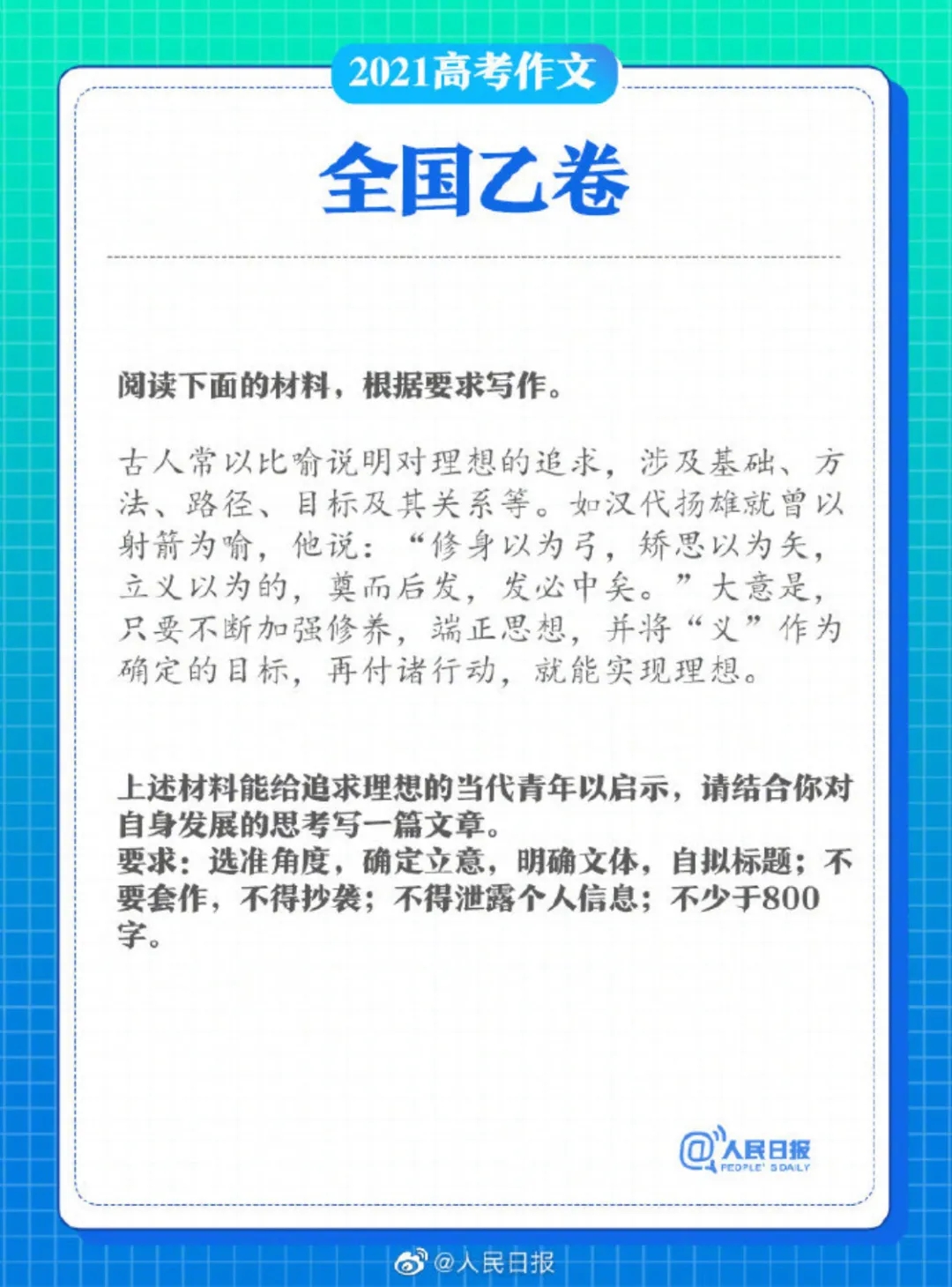
心理学上也对如何实现理想目标做出过理论假设和研究,比如:
个人奋斗(修身)是人格研究中动机取向的一个研究话题,与目标实现密不可分[6];
在理想目标方面,基于个人兴趣及价值观的内在目标(intrinsic goal)比基于外部压力的外在目标(extrinsic goal)更可能达成,具体目标比模糊目标更易达成[7][8];因此,“立义以为的”,要从内心认可“义”、要把“义”具体化。
而在实现理想目标的过程中,自我调节理论(self-regulation theories)[9]讨论了促进目标达成的调节策略,关键在于维持适宜的动机(矫思以为矢)以及形成清晰的执行意向(奠而后发)。
天津卷
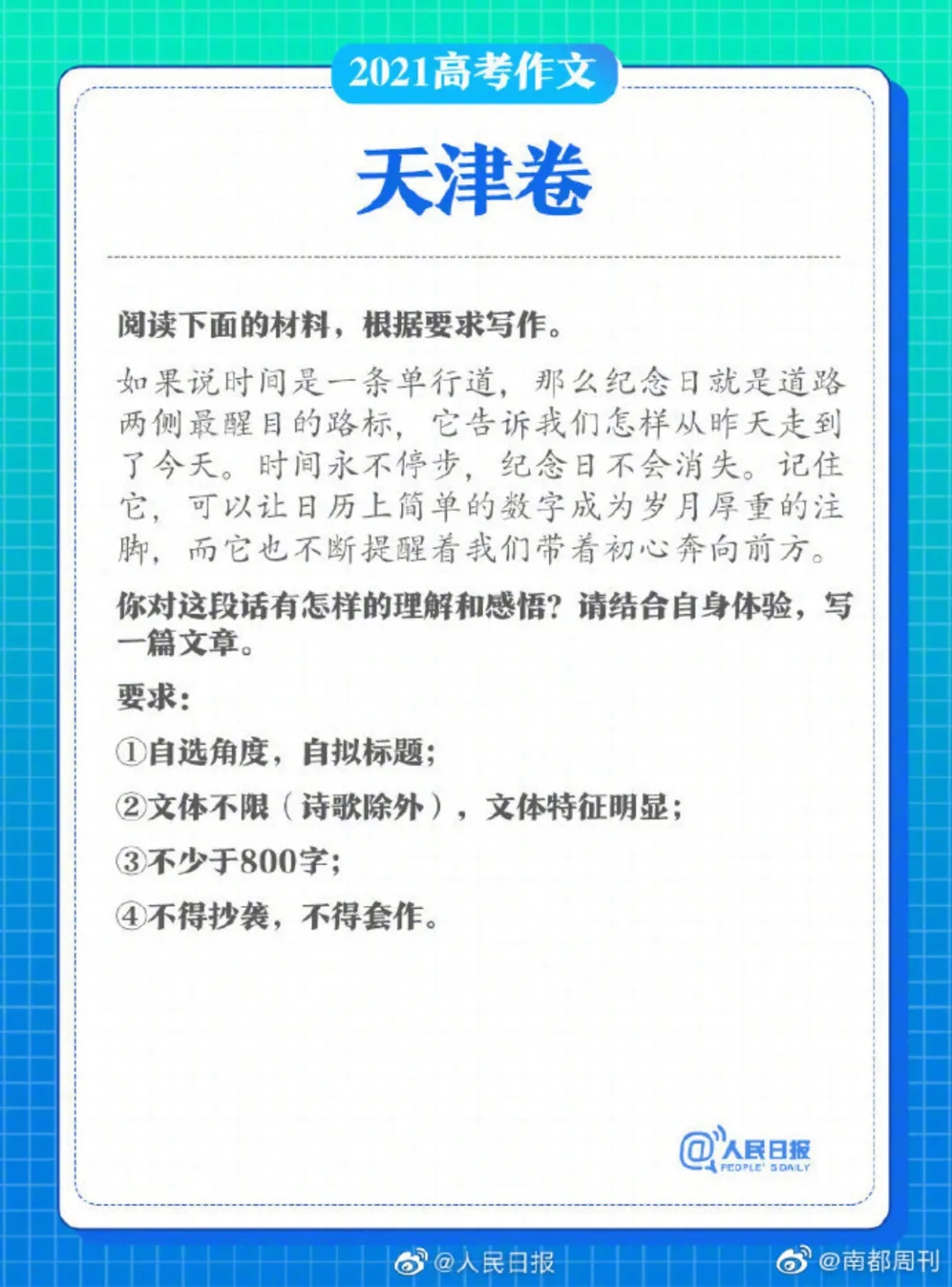
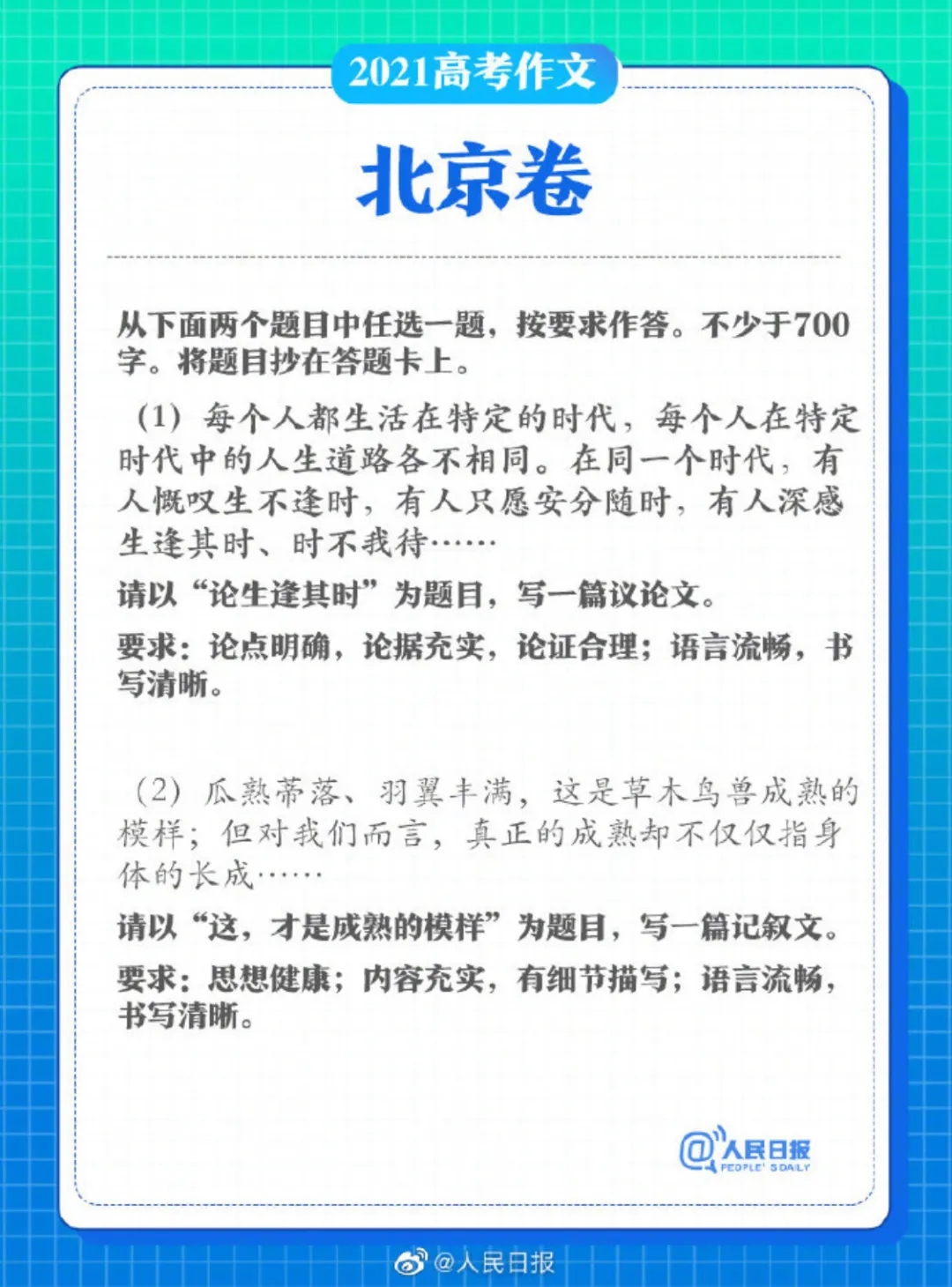
个人将成功归因于能力和努力等内部因素时,会感到满意、自信、骄傲; 个人将成功归因于运气好、时机好时,产生的满意感会比较少; 个人将失败归因于能力差、没努力等内部因素时,会产生羞愧和内疚; 个人将失败归因于运气差、“生不逢时”时,产生的羞愧感会比较少。
在高考作文中,最稳妥的选点也许是“将成功归因于内部,激励自己继续努力”。
//第二题
真正的成熟不仅仅指身体的成长,还有心理的成熟。
自我洞察。包括自我认知、自我反思、自我体验。 社会认知。对客观世界及人际交往良好认知,说人话就是“看事情积极、想得开”。 情绪管理。情绪成熟是个体心理成熟不可缺少的一环,我们日常生活中常说的“情商”,在有的心理学研究者看来就包括合理地分析情绪及对情绪恰当地反应。 社交风格。会处理人际关系、“会办事”。 适应能力。比如社会化能力强、遇到问题办法多、“能抗事”。 爱的能力。包括关心别人、助人等。
七八百字作文也许容不下这么多点,但自我和社会两方面最好都有所涉及。
浙江卷
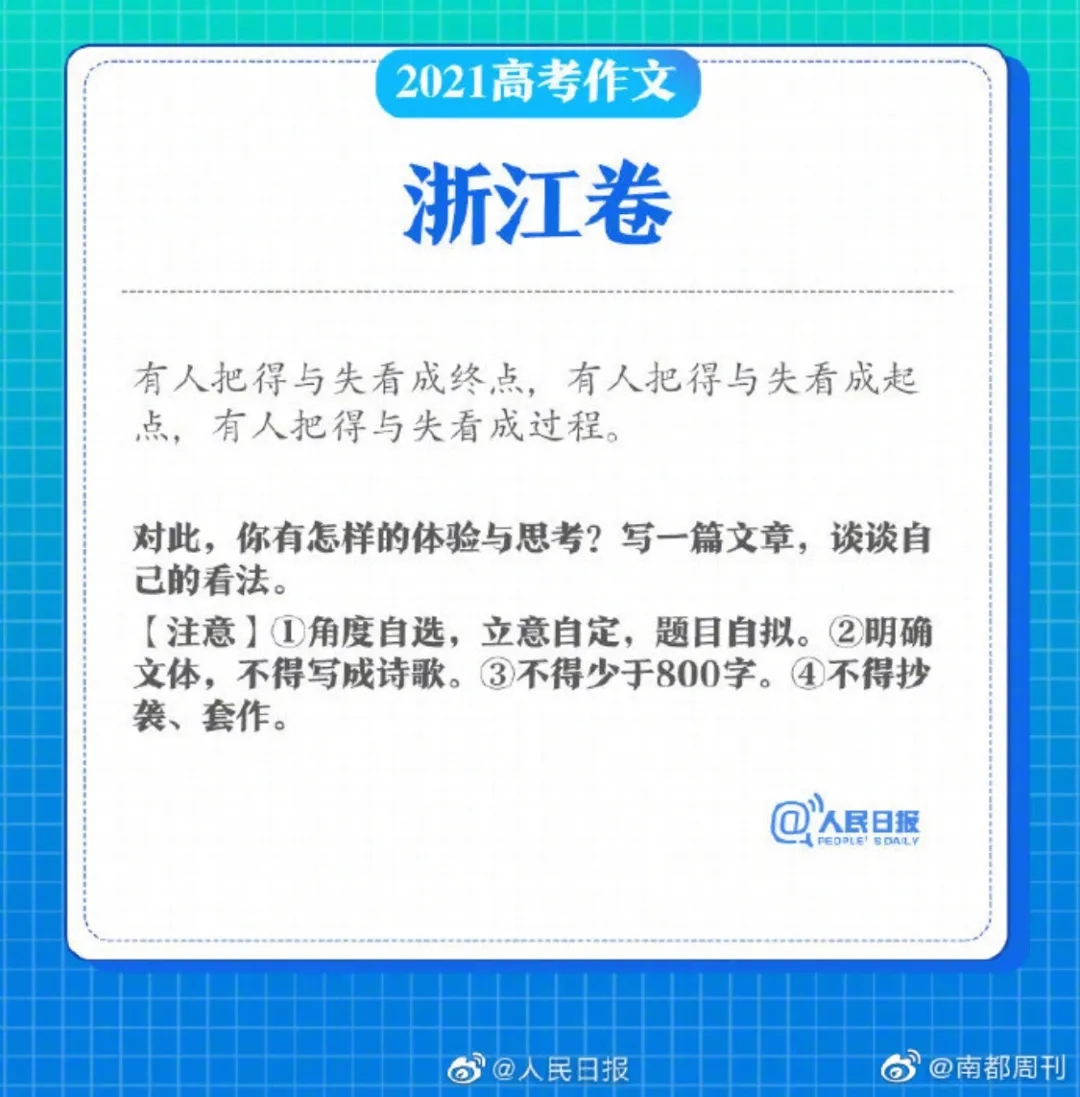
(当然,说「高考是诊断性评价」是有些勉强:真正的诊断性评估是由授课教师来组织的。
比如说在上课前通过测验了解学生对心理统计的掌握情况,发现大部分学生能分析并解释简单的方差分析结果,但不太清楚多重比较和简单效应,那么之后的课程就可以把这些作为授课重点,这就是一次典型的诊断性评估)
每年的夏天,都是一代人的回忆。
或晴或雨,不变的是手心有汗、纸上留墨。
永远都有年轻人,从一场盛大的考试开启下一段旅程。
祝所有考生心想事成,夏天快乐!
参考文献
[1]Sasmita, A. O., Kuruvilla, J., & Ling, A. P. K. (2018). Harnessing neuroplasticity: modern approaches and clinical future. International Journal of Neuroscience, 128(11), 1061-1077.
[2]Yeager, D. S., Hanselman, P., Walton, G. M., Murray, J. S., Crosnoe, R., Muller, C., ... & Dweck, C. S. (2019). A national experiment reveals where a growth mindset improves achievement. Nature, 573(7774), 364-369.
[3]https://zh.m.wikipedia.org/wiki/%E5%9F%BA%E6%A8%A1_(%E5%BF%83%E7%90%86%E5%AD%B8)
[4]蔺雯雯, & 崔丽霞. (2008). 图式治疗理论与实践. 心理科学进展, 16(04), 576-581.
[5]Bandura, A. (2008). Observational learning. The international encyclopedia of communication.
[6]刘秋萍, 石向实. (2011). 个人奋斗及相关研究综述. 社会心理科学(01), 11-16.
[7]Gollwitzer, P. M., & Oettiingen, G. (2015). Motivation and actions, psychology of. In J. D. Wright (Ed.), International encyclopedia of the social & behavioral sciences (2nd ed., pp. 887–893). New York: Elsevier.
[8]Locke, E. A., & Latham, G. P. (2006). New directions in goal-setting theory. Current Directions in Psychological Science, 15, 265–268.
[9]Gollwitzer, P. M., & Brandstätter, V. (1997). Implementation intentions and effective goal pursuit. Journal of Personality and Social Psychology, 73, 186–199.
[10] 冉雅璇, 卫海英, 李清, & 雷超. (2017). 心理学视角下的人类仪式: 一种意义深远的重复动作. 心理科学进展, 26(1), 169-179.
[11]Alcorta, C. S., & Sosis, R. (2005). Ritual, emotion, and sacred symbols. Human nature, 16(4), 323-359.
[12] Lang, M., Krátký, J., Shaver, J. H., Jerotijević, D., & Xygalatas, D. (2015). Effects of anxiety on spontaneous ritualized behavior. Current Biology, 25(14), 1892-1897.
[13] Wen, N. J., Herrmann, P. A., & Legare, C. H. (2016). Ritual increases children’s affiliation with in-group members. Evolution and Human Behavior, 37(1), 54-60.
[14] Stolarski, M., Fieulaine, N., & Zimbardo, P. G. (2018). Putting time in a wider perspective: The past, the present and the future of time perspective theory.
[15] Zimbardo, P. G., & Boyd, J. N. (2015). Putting time in perspective: A valid, reliable individual-differences metric. In Time perspective theory; review, research and application (pp. 17-55). Springer, Cham.
[16]陈琦, 刘儒德. (2007). 当代教育心理学(第二版). 北京师范大学出版社. p227.
[17]王瑞, 邓丽芳, 郑日昌. (2009). 心理成熟度量表的初步编制. 中华行为医学与脑科学杂志, 18(2), 180-183.
[18]Harlen, W., & James, M. (1997). Assessment and learning: differences and relationships between formative and summative assessment. Assessment in education: Principles, policy & practice, 4(3), 365-379.
[19]Treagust, D. F. (2012). Diagnostic assessment of students' science knowledge. In Learning science in the schools (pp. 339-358). Routledge.




